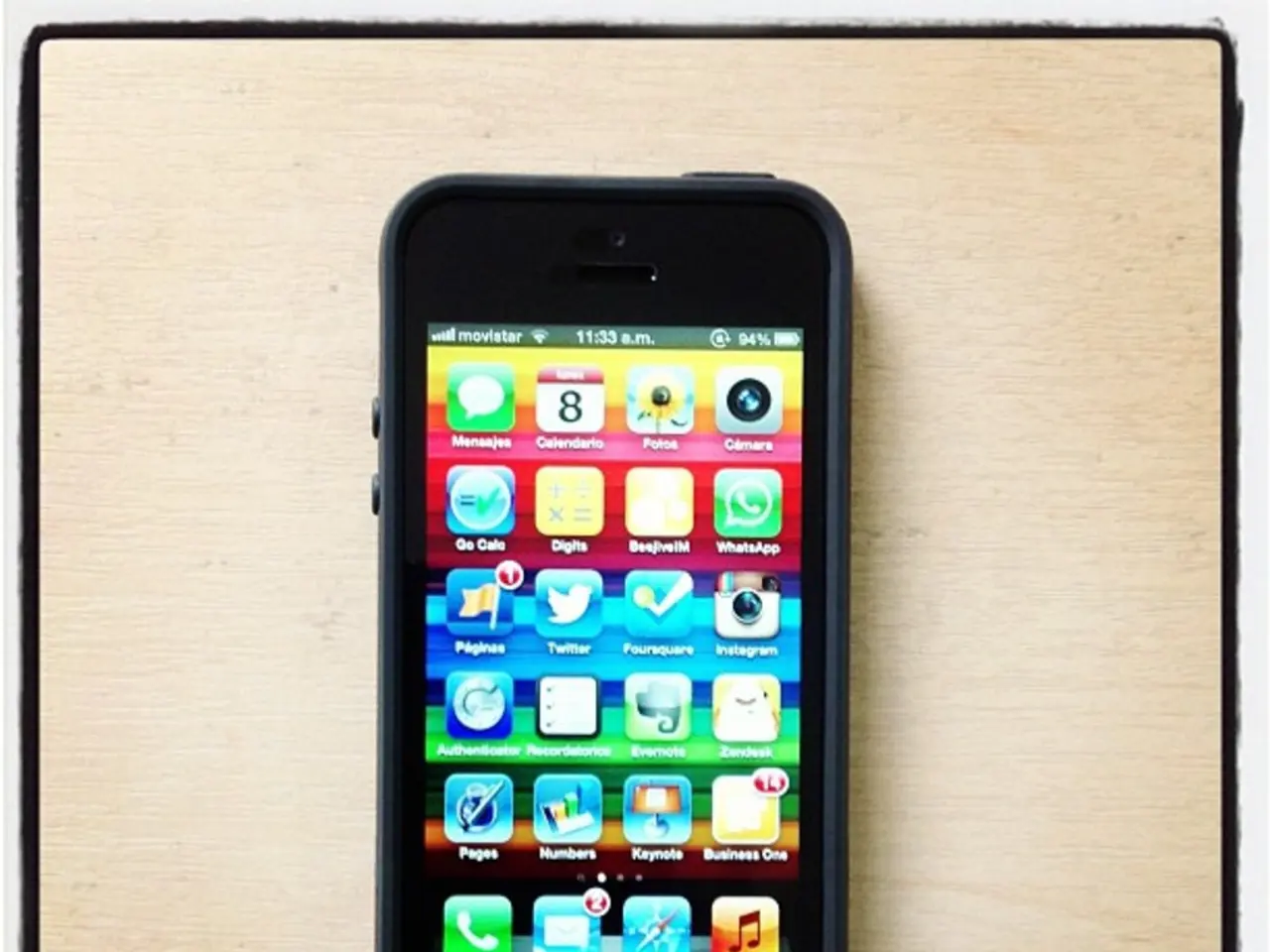Indoor Solar Panels: Harnessing Sunlight for the Future of Intelligent Gadgets
In a groundbreaking development, indoor solar panels are emerging as a smart solution for powering small, low-energy devices that need to run continuously, such as sensors, smartphones, and smart-home systems. According to Imogen Pass, Digital Marketing Associate at Ossila, a UK-based scientific equipment and materials manufacturer at the forefront of indoor solar panel innovation, these advancements could lead to more sustainable, self-powered devices across homes.
Recent advancements in indoor solar panels have significantly improved their efficiency and suitability for powering low-energy devices. Key advancements include high-efficiency indoor III-V solar cells and perovskite-based indoor photovoltaics (IPVs).
Researchers at Fraunhofer ISE have developed an indoor gallium indium phosphide (GaInP) solar cell that achieved a remarkable power conversion efficiency of over 40% under weak indoor light. This efficiency milestone enables more effective harvesting of ambient indoor light to power low-consumption devices.
Perovskite solar cells are also emerging as promising candidates for indoor applications due to their tunable properties and potential for low-cost, roll-to-roll manufacturing. Recent developments in blade-coating techniques for perovskite IPVs have led to improved film quality and charge transport layers, enhancing their ability to capture ambient light efficiently indoors.
Enhanced energy harvesting from ambient light, reduced dependency on batteries or wired power, and integration with IoT and smart energy systems are some benefits of these advancements for powering low-energy indoor devices. Continuous power supply from indoor photovoltaics can extend device lifetimes, reduce maintenance and environmental impact associated with battery replacements. Coupling indoor solar panels with AI-driven energy optimization and battery storage can lower energy consumption and operational costs, supporting sustainable, resilient, and cost-effective deployment of low-energy electronics.
When exposed to indoor light, these solar panels generate electricity that can power small, low-energy devices continuously without relying on batteries or plugs. Indoor solar panels are lightweight, thin, and sometimes flexible, making them easy to integrate into compact devices. Ossila, a leading player in the field, is involved in standardized testing for indoor solar panels to maintain consistency and quality in their performance. The use of calibrated indoor light simulators by Ossila is a strategy to address the challenge of ensuring consistent performance under varied indoor lighting conditions in indoor solar panel development.
Imogen Pass explains that ensuring all devices are tested under pre-defined lighting conditions is key to quality control in indoor solar panel development. The use of indoor solar materials can make devices flexible and lightweight, and combined with artificial intelligence, indoor solar could enable fully autonomous devices. Indoor solar panels are designed to harvest electricity from artificial light sources like LED and fluorescent bulbs, differentiating them from traditional outdoor panels.
These advancements could potentially lead to a decrease in the reliance on batteries for continuous power in small devices, helping to reduce battery waste and enabling more sustainable, self-powered devices across homes. The Homebuilding & Renovating Newsletter provides expert advice, how-to guides, and design inspiration for bringing dream homes to life, and indoor solar panels could be a significant addition to the smart home technologies of the future.
- The new indoor solar panels, proven to be efficient and suitable for powering low-energy devices, are being hailed as a potential game-changer for self-powered devices in homes.
- With high-efficiency indoor III-V solar cells and perovskite-based indoor photovoltaics (IPVs) leading the way, these advancements could diminish the need for batteries in small devices, thereby reducing battery waste.
- Being lightweight, thin, and sometimes flexible, indoor solar panels can be easily integrated into compact devices, making them an appealing addition for smart homes.
- In an effort to maintain consistency and quality in indoor solar panel performance, leading manufacturers like Ossila are using calibrated indoor light simulators for testing.
- The integration of indoor solar panels with AI-driven energy optimization and battery storage can lower energy consumption and operational costs, supporting sustainable, resilient, and cost-effective deployment of low-energy electronics.
- As these advancements in indoor solar energy technology continue to evolve, they could be a significant inclusion in forthcoming smart home technologies, as detailed in the Homebuilding & Renovating Newsletter's expert guides and design inspiration.




